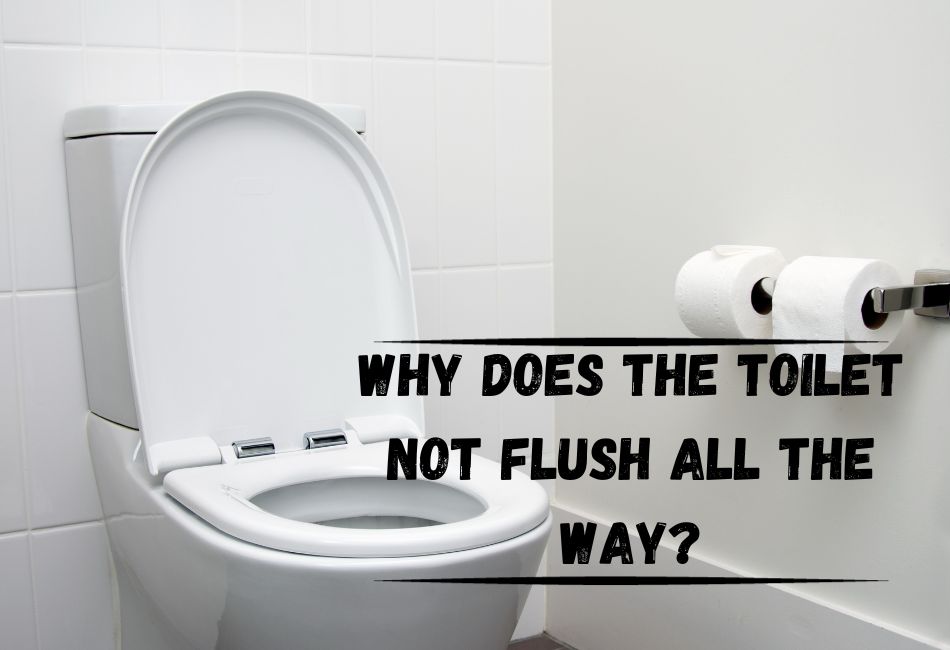A fully functioning toilet is an essential component of any household. Its primary role in maintaining sanitation and hygiene cannot be overstated, providing an efficient means of sewage disposal.
However, it can be frustrating and inconvenient when your toilet isn’t flushing. This common issue can be due to many reasons – from minor technical hitches to significant underlying problems.
In this article, we will delve into the top nine reasons why your toilet might not be flushing correctly, giving you a better understanding of what might be going wrong and how you can address it.
1. Insufficient Water Level in the Tank
One time, I was frustrated with the half-hearted flush of my toilet. After some research, I discovered the culprit could be an insufficient water level in the tank.
The water level in your toilet’s tank significantly ensures a full, effective flush. When the water level is too low, the toilet lacks the force to clear the bowl completely.
Importance of Checking and Adjusting the Water Level
Much like how I had to learn the hard way, it’s pivotal for every homeowner to understand the importance of checking and adjusting the water level in your toilet tank.
Ensuring your tank fills to the correct level (usually marked on the tank wall) is a simple way to prevent weak flushes.
Steps to Adjust the Water Level
Adjusting the water level is a DIY task that anyone can take on. All it requires is to adjust the fill valve in your tank.
If the water level is too low, you’ll need to find the fill valve (typically a floating ball or cylinder) and adjust it to allow more water into the tank.
2. Flapper Issues
Another issue I encountered was with the toilet flapper. For those who don’t know, the toilet flapper is a rubber mechanism in your toilet tank that controls water flow from the tank to the bowl when you flush.
Common Problems with Flappers
Common flapper issues may include warping, decay, or misplacement, which disrupt the water flow and lead to incomplete flushes.
DIY Flapper Replacement and Maintenance Tips
Fortunately, replacing a flapper is straightforward. When I replaced mine, I only took a trip to the local hardware store for a replacement flapper and a few minutes to install.
Regular checks and cleaning can also prolong the life of your flapper and keep it functioning properly.
3. Clogged Rim Holes
Finally, another issue to look out for is clogged rim holes. These are the small holes under the rim of your toilet bowl, crucial in creating the flushing action.
How Clogged Rim Holes Affect Flushing
When these holes are clogged, the water can’t flow properly into the bowl, resulting in a weak or incomplete flush.
Methods to Unclog Rim Holes
Unclogging them can be as simple as using a wire or a toothpick to clear out mineral deposits.
Trust me, a few minutes of unclogging these holes can significantly improve your toilet’s flushing power!
4. Mineral Buildup in the Siphon Jet
The siphon jet is an essential part of your toilet that you might not even know existed. I sure didn’t until I had issues with it.
The siphon jet at the bottom of the bowl creates the siphon action that allows your toilet to flush efficiently.
Effects of Mineral Buildup on Flushing
Like the rim holes, the siphon jet can also become clogged with mineral deposits, especially in areas with hard water.
When I first experienced this, I was perplexed by the weak flush despite having a full water tank. It felt like the toilet had lost its “oomph.”
Preventive Measures and Cleaning Techniques
I found that regular cleaning with vinegar or a specialized toilet-cleaning acid works wonders to prevent and clean mineral buildup. Just be sure to use gloves and follow all safety instructions.
5. Chain Issues
The chain in your toilet tank is another small but integral part of the flushing mechanism. It connects the flapper to the flush lever and helps lift the flapper when you flush.
Problems Associated with a Malfunctioning Chain
Your toilet won’t flush properly if the chain is too loose or tight. I had a particularly frustrating experience once when my chain kept getting caught under the flapper, causing the toilet to run continuously.
Adjusting and Replacing a Malfunctioning Chain
Adjusting the chain is quite easy — unhook it and reposition it on a different hole in the lever arm.
If the chain is old or rusted, it might be time for a replacement. It’s a quick and inexpensive fix that can save you a lot of headaches down the line.
6. Faulty Fill Valve
Last but not least is the fill valve. Simply, it’s the component that refills the tank after each flush.
Signs of a Faulty Fill Valve
If your toilet tank is taking forever to refill, or it’s not refilling at all, you might have a faulty fill valve.
I realized I had this problem when I noticed an odd, humming noise whenever I flushed.
Steps for Repairing or Replacing a Faulty Fill Valve
To fix this, turn off the water supply, remove the old fill valve, and replace it with a new one.
It’s a bit more complex than the previous fixes, but with some patience and a good tutorial, you can do it yourself, just like I did.
8. Sewer Line Blockages
One factor often overlooked when it comes to toilet flushing issues is the impact of external factors, such as a blocked sewer line.
It’s crucial to note that your indoor plumbing system doesn’t operate in isolation but is part of an intricate network that connects to the public sewer system.
Signs of a Sewer Line Blockage
I remember when my toilet began to back up, and despite my best efforts, no amount of plunging seemed to help.
I started noticing a foul smell and odd gurgling sounds from my toilet. The problem wasn’t any internal components; it was a blockage in my sewer line.
Professional Solutions for Sewer Line Issues
This is a situation where professional help is almost always necessary. Clearing a sewer line blockage requires specialized equipment and expertise.
I had to call in the professionals and trust me, it was worth every penny.
9. Venting Problems
Vents play a vital role in maintaining your toilet’s flushing power. They allow air to enter the plumbing system to replace the vacuum created when water rushes down the drain.
How Venting Issues Impact Toilet Flushing
I witnessed this first hand when my toilet started flushing weakly, and a plunger or a snake couldn’t resolve the problem.
I later discovered that the vent pipe leading to the roof was blocked, restricting the airflow and consequently affecting the toilet’s flushing power.
Addressing Venting Problems to Improve Flushing
In my case, I had to climb onto the roof and clear out the obstruction in the vent pipe. It wasn’t easy, but it solved my flushing problem immediately.
Conclusion
We’ve covered nine potential reasons why your toilet may not be flushing properly, ranging from simple flapper or chain issues to more complex problems like blocked sewer lines or venting problems.
Regular maintenance, including checking for signs of wear and tear and promptly replacing faulty components, can prevent most of these issues.
However, don’t hesitate to seek professional help for complex problems like sewer line blockages or venting issues. They can be a bit too tricky to handle on your own.
A well-functioning toilet is not just about convenience; it’s about maintaining a clean and healthy living environment.
So, the next time you encounter a flushing issue, remember you have the power to fix it. Happy flushing!

